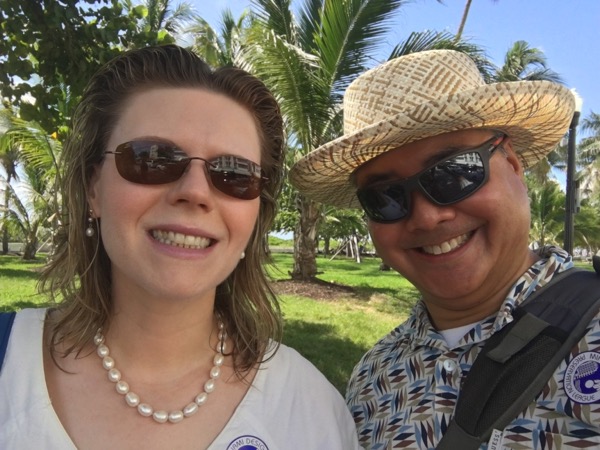
Sunday, July 2: A beautiful day to join the guided walking tour of South Beach’s art deco buildings, courtesy of the Miami Design Preservation League. It ran 90 minutes, during which time we got to see South Beach’s predominant architectural styles: Art deco, Mediterranean revival, and MiMo.
Art Deco is short for the French term arts decoratifs (decorative art), which in turn was derived from a 1925 expo called Exposition Internationale des Arts Décoratifs et Industriels Modernes (International exposition of decorative and modern industrial art), where the style was popularized.
The Miami Design Preservation League says that art deco designs feature the following:
Over-all symmetry, ziggurat (stepped) rooflines, glass block, decorative sculptural panels, eyebrows, round porthole windows, terrazzo floors, curved edges and corners, elements in groups of three, neon lighting (used in both exteriors as well as interior spaces).
Many of South Beach’s buildings were built in the 1930s, when a later variant of art deco architecture called Streamline Moderne, a.k.a. Art Moderne, came into being. According to Wikipedia, “Its architectural style emphasized curving forms, long horizontal lines, and sometimes nautical elements.”
Carlyle

You may recognize the Carlyle (construction started in 1939, and was completed in 1941) from a number of films. It was the gay nightclub in The Birdcage, and also appeared in Scarface and Bad Boys II.
Leslie

The Leslie hotel was designed and built in 1937 by Albert Anis, who designed a number of hotels in Miami Beach. It’s one of the newer renos, having been renovated in 2014.
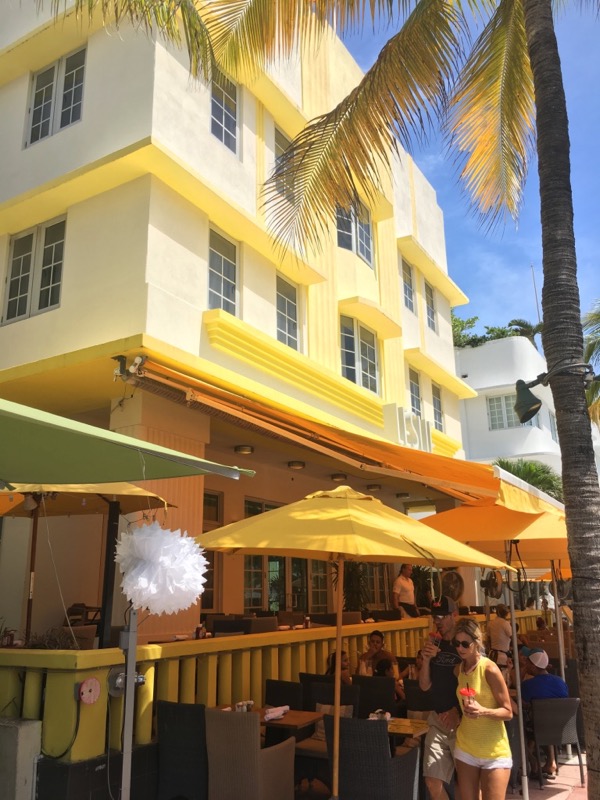
Breakwater
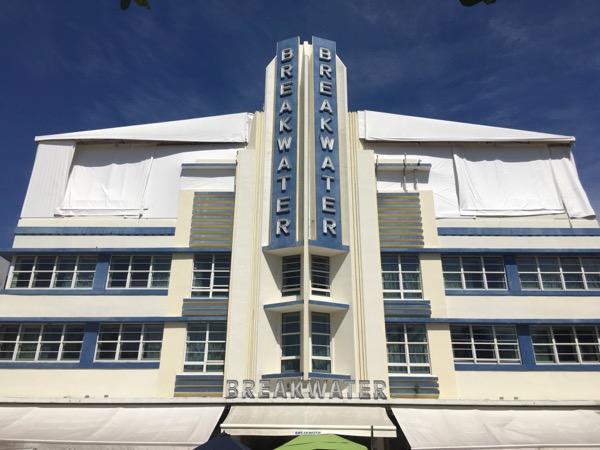
Anton Skislewicz designed the Breakwater, which was built in 1939. Its roof was used as the backdrop for this famous ad for Calvin Klein Obsession from 1987:
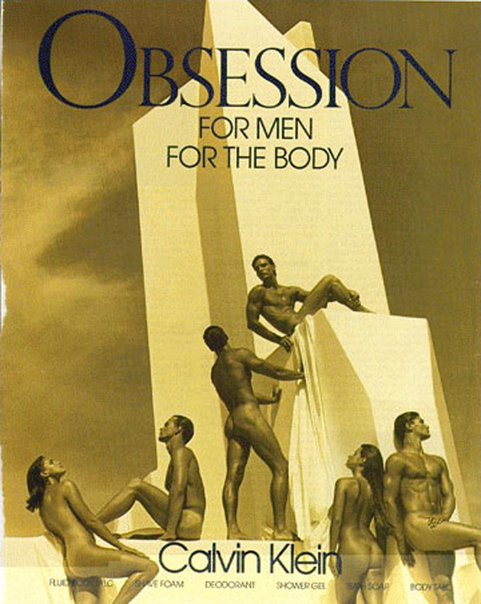
Congress

The Congress was built in 1936 and now is functions as vacation condos. Its owners also own the two buildings to its right, and painted all three buildings with the same white and light blue color scheme.
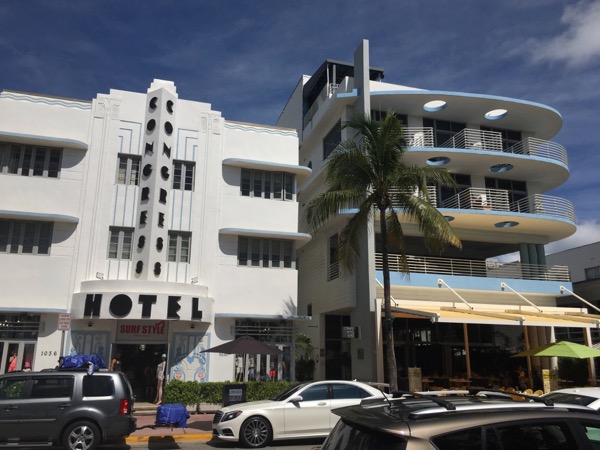

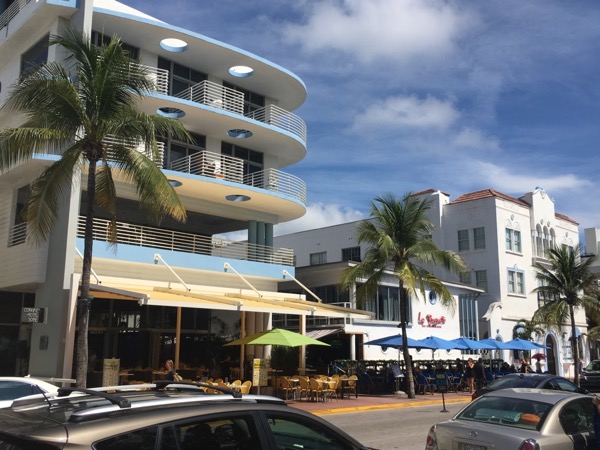
Victor

On the next block north of the Congress is Hotel Victor.
Tides
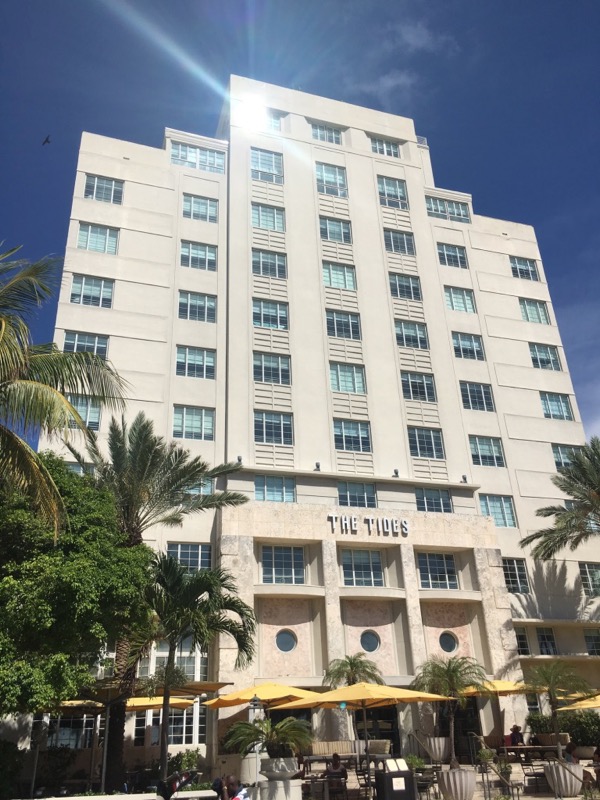
At 12 stories, the Tides towers above its Ocean Drive neighbors. It was the tallest art deco building of the mid-1930s and was designed by Lawrence Murray Dixon.

The tour took us inside the Tides, which has a beautiful lobby, from which you can see the “Turtle Room”…
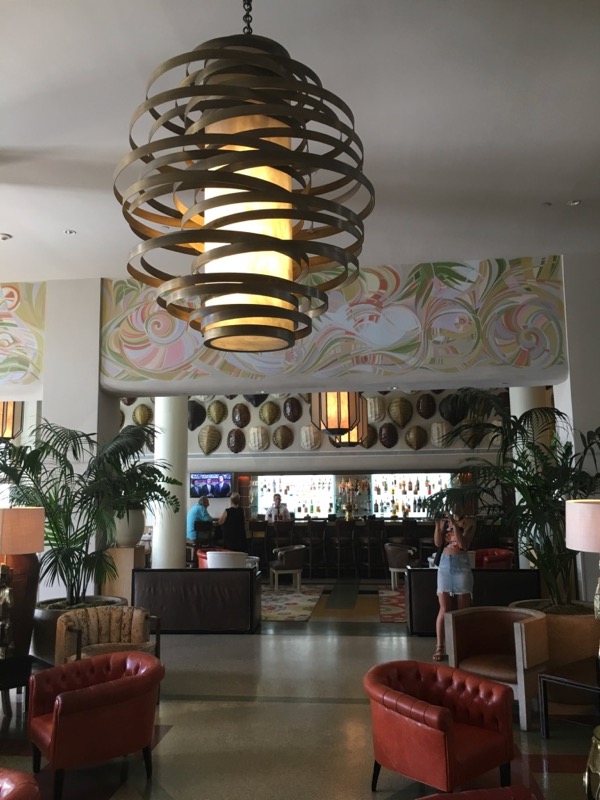
The story is that many years ago, one of the Tides’ guests left five large tortoise shells in their room. It’s presumed that the guest was a smuggler, but for some reason decided that the shells were too “hot” and simply ditched them. The hotel had several duplicates of the original shells made, and both originals and copies hang on the wall today, and it’s said that no one at the hotel knows which are which.
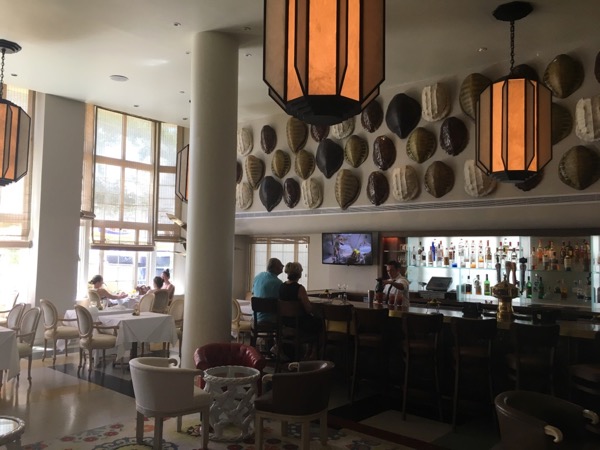

Essex

They’ve plugged up the porthole windows on the Essex, but kept the other art deco features, such as the tower, eyebrows, and the font. It was built in 1938 and designed by Henry Hohauser.
Webster

The Webster was also designed by Henry Hohauser, and its art deco pedigree was enhanced by the classic cars parked in front of it that day. It started out as a hotel, but is now a three-story boutique for designer clothes.
Kent

The Kent hotel first opened in 1939.
Fairwind
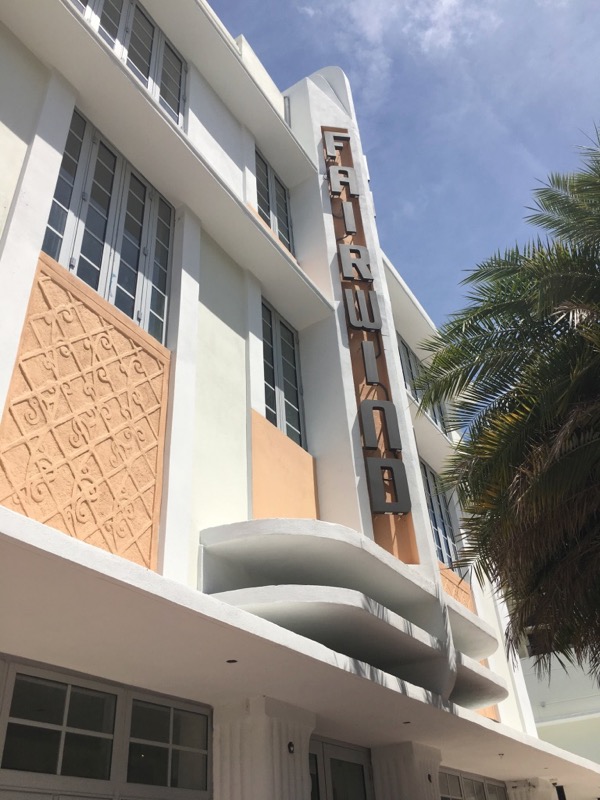
Originally named the Fairmont and constructed in 1936, the Fairwind is another 2014 reno.
Crescent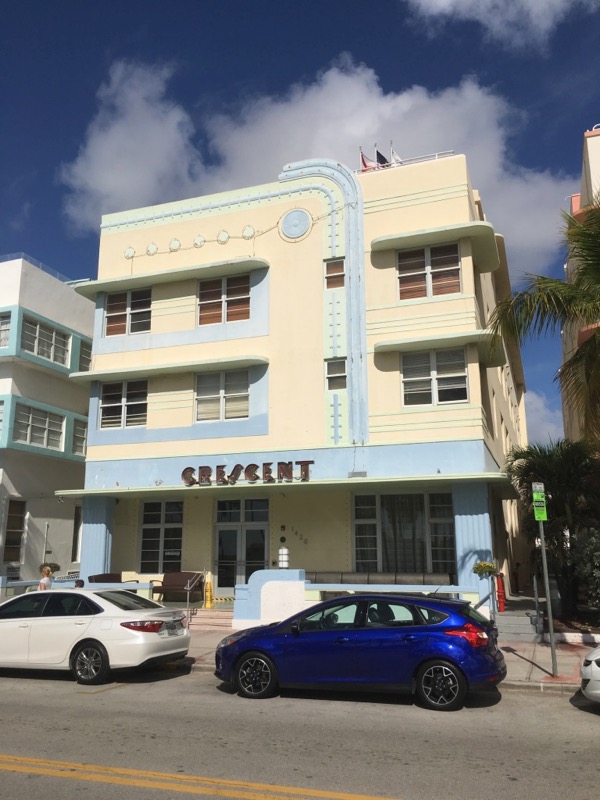
The Crescent was built in 1941, and yet another Henry Hohauser design.
Winter Haven
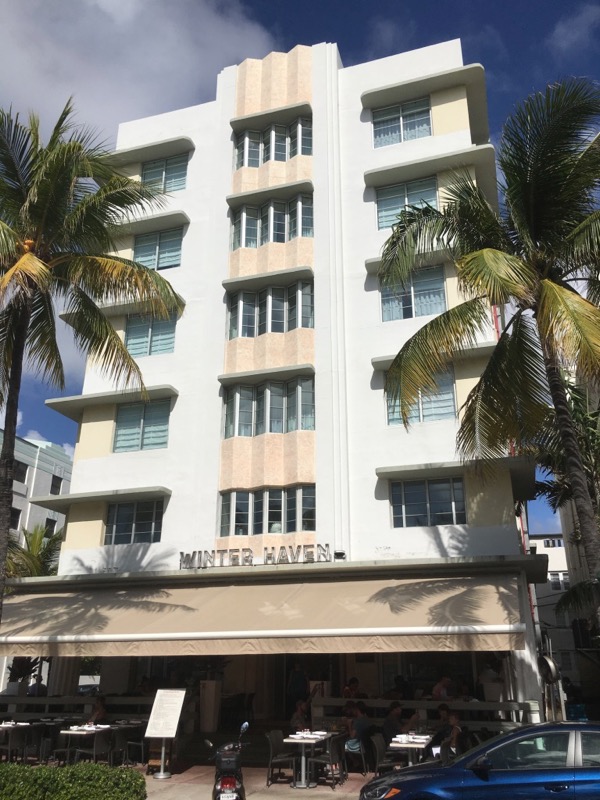
Completed in 1939, the Winter Haven was designed by Albert Anis.
Edison
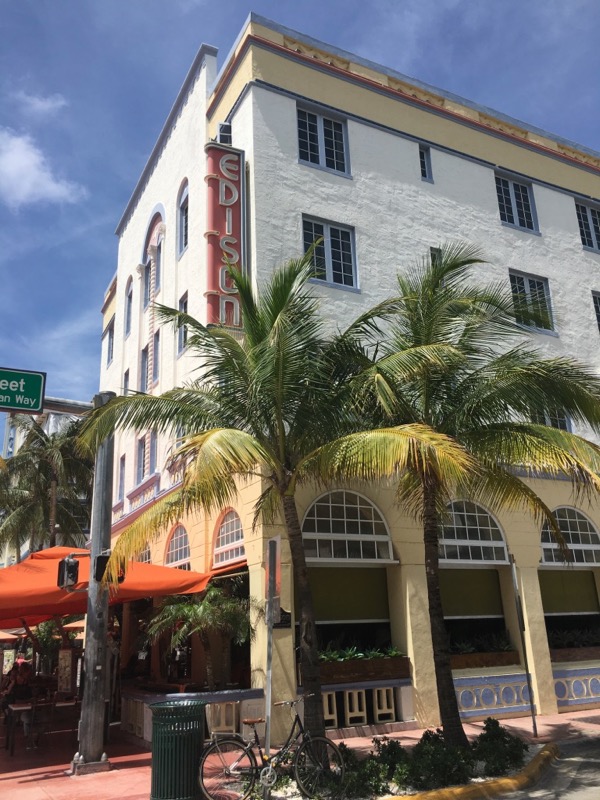
Another Henry Hohauser hotel: the Edison, built in 1935.
Señor Frogs

Yet another Henry Hohauser design: Señor Frogs, which was once Jerry’s Famous Deli:

McAlpin/Ocean Plaza
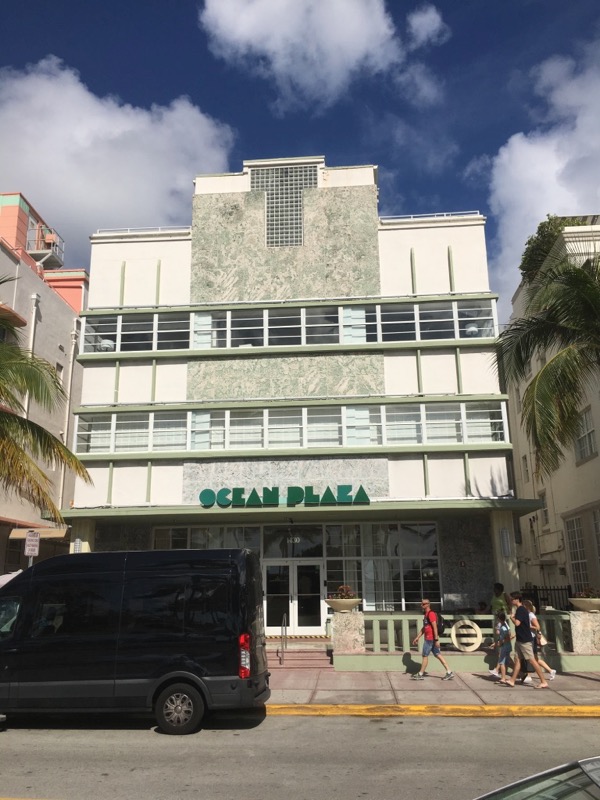
The McAlpin and Ocean Plaza are side by side on Ocean Drive and are now Hilton properties.
Penguin
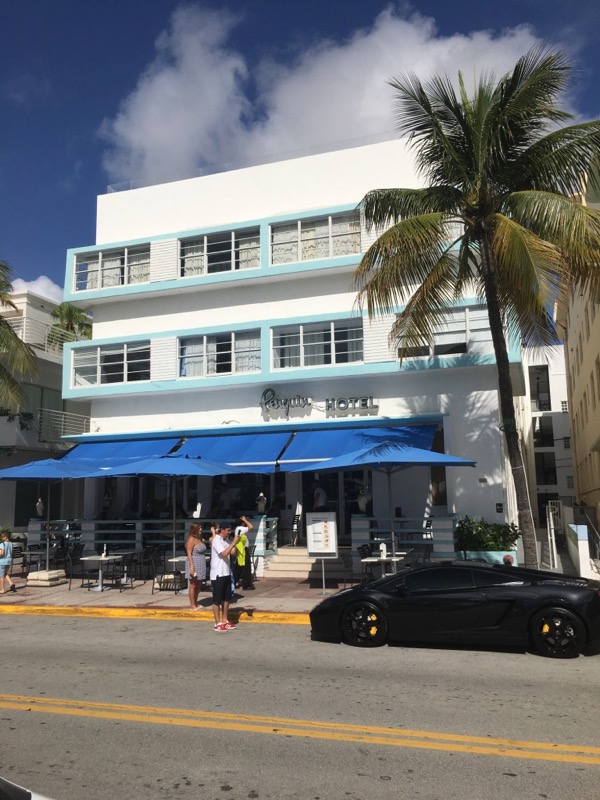
Did Henry Hohauser design everything in South Beach? The Penguin (originally the Golden Dawn) is another of his works.
Commodore

The answer to my question about Henry Hohauser above appears to be “Yes. Yes he did.” The Commodore is another one of his designs, this one dating from 1939.
Other buildings we saw
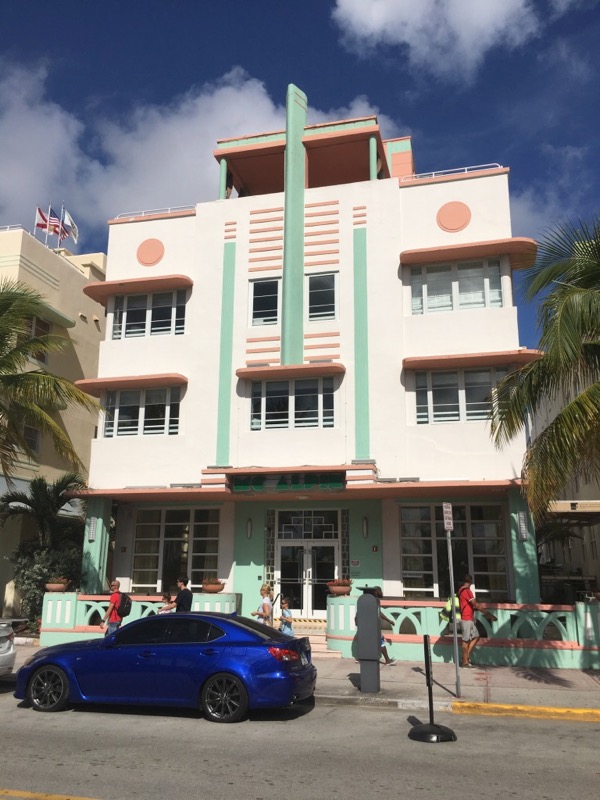


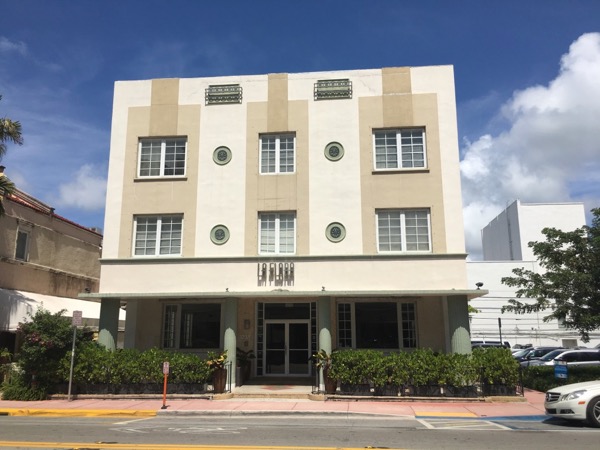
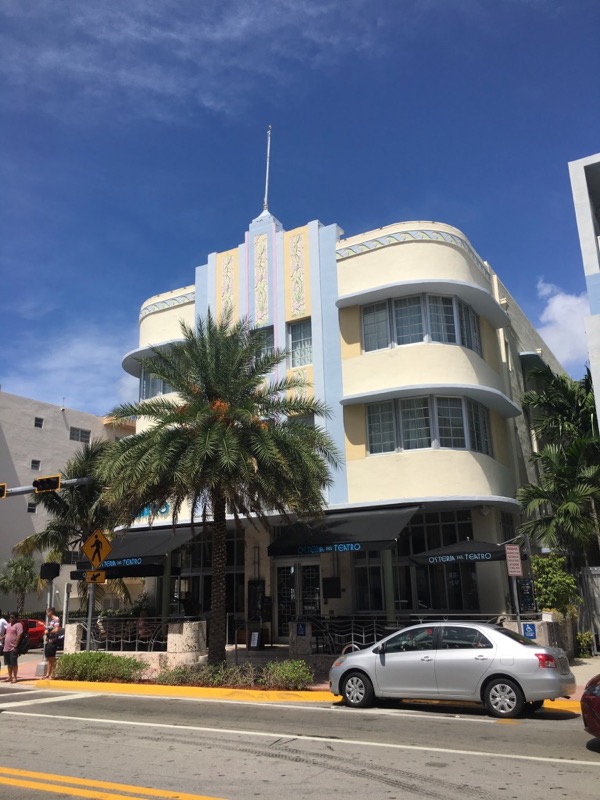

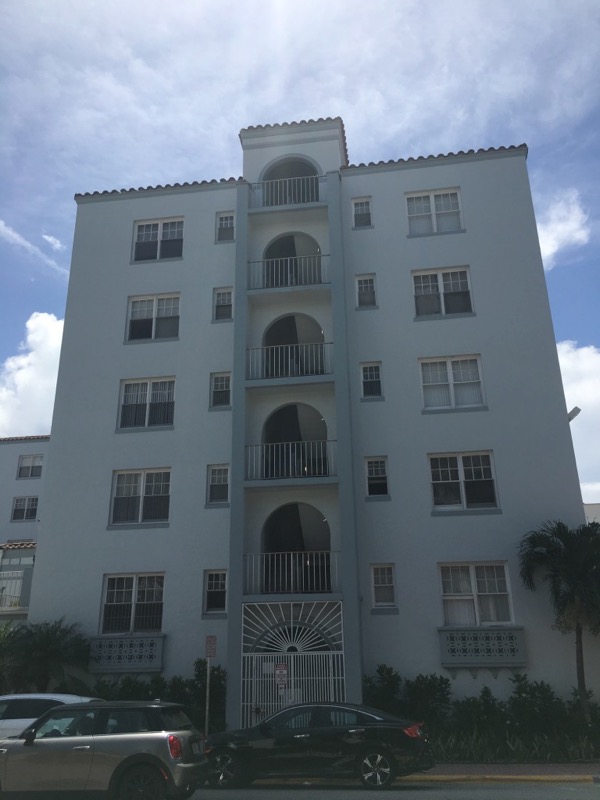


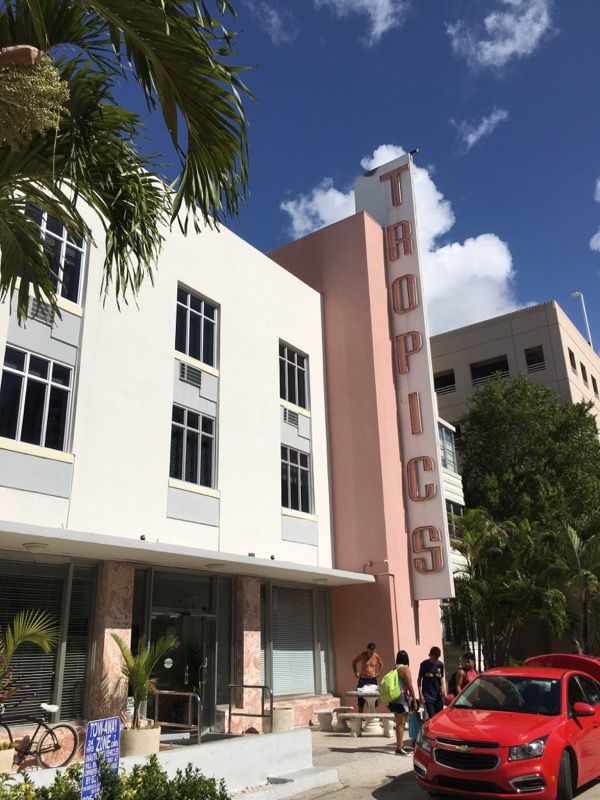




End of the tour

We returned to Miami Design Preservation League’s Art Deco Welcome Center at the end of the tour. We decided to close it out with photos of ourselves by the Miami Beach clock/thermometer, and then head to lunch.

Recommended reading
- An introduction to the Art Deco historic district on Miami Beach
- Fodor’s: 10 Best Art Deco Buildings in Miami Beach
- Miami Art Deco District Self-Guided Tour
- Miami New Times: The ten best Art Deco buildings in Miami Beach
- Time Out: A guide to Art Deco Miami
2 replies on “Scenes from our vacation, part 4: South Beach Art Deco extravanganza!”
Wow, that brings back the memories. When I was a kid we used to go down to Miami Beach (from NYC) for the Christmas holidays. We even took the train, the Silver Meteor, a couple of times. I remember lying about my age so I could ride free. We stayed in hotels that looked like that with the streamlines and decorations, but we didn’t think of them as anything special. They were just hotels. I can’t even remember the proper names. I remember my parents call one of them “Gussie’s” after the owner, but that wasn’t the name on its marquee. Gussie had a noisy parrot in the lobby. Later, we stayed at the Raleigh, before it was the Raleigh. The jokes were always about the Fountainbleu and the Eden Roc, but the real thing was the Roney Plaza which was like something out of a Miami Beach gothic. It had a walled garden, patios, terraces, archways and art deco up the gazoo. They were just planning the condo tower when we visited, so I doubt I’d recognize it today if it is still around.
[…] Walking around South Beach and looking at Art Deco architecture is hungry- and thirsty-making work, so our next stop was Sweet Liberty Drinks and Supply Company for lunch, located at the corner of 20th Street and Liberty Avenue. They’ve taken the kitchen of a bistro, the soul of a craft bar, and the vibe of your favorite dive bar, and brought them into a single place. […]